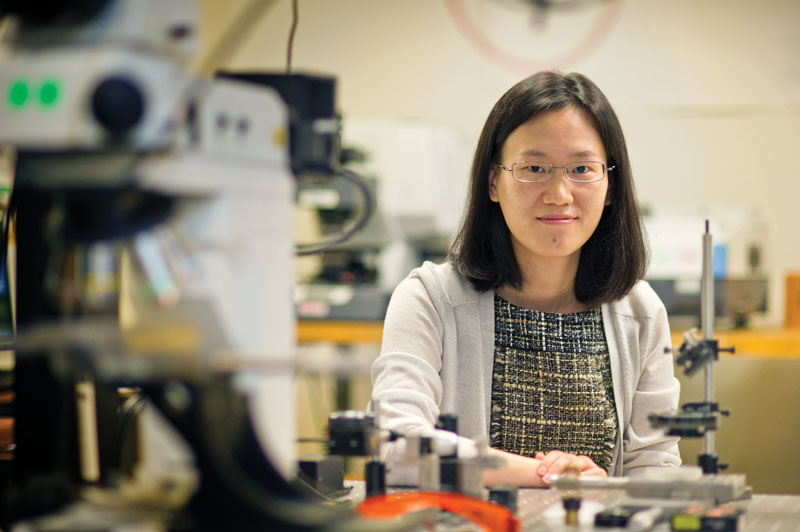Nose knows
Waiting to Exhale
Handheld device could soon detect dangerous gas vapors caused by diseases, explosives, allergens, and more

Alice Sun
Imagine a handheld device that could detect if a person has diabetes, determine if accelerants were used in a fire, and identify allergens and toxic fumes in the environment.
Yuze “Alice” Sun, an assistant professor in electrical engineering, and Weidong Zhou, a professor of electrical engineering, received a $400,000 grant from the National Science Foundation to build a tool that would use nanoscale gas chromatography to separate vapors from a person’s breath or the air in a room and detect possible hazards.
“Our sensors can separate hundreds of vapors in complex samples and identify the ones that could be used as chemical markers,” Dr. Sun explains. “Many devices like this are large and don’t always have separation capabilities to provide detection specificity.”
The device could help find certain allergens or toxins in a home and determine whether explosives are present in luggage or on a person. It also has important health applications, such as making it easier to detect diabetes.
“This is a very hot area—personalized medicine,” Dr. Zhou says. “The device can target a person’s individual health care needs and will have the power to detect very, very low vapor concentrations because the sensors are extremely sensitive.”
“Imagine being able to non-invasively monitor a person’s blood sugar level instead of having that diabetic prick their finger to do a blood test,” Sun adds. “That’s our eventual goal.”

















